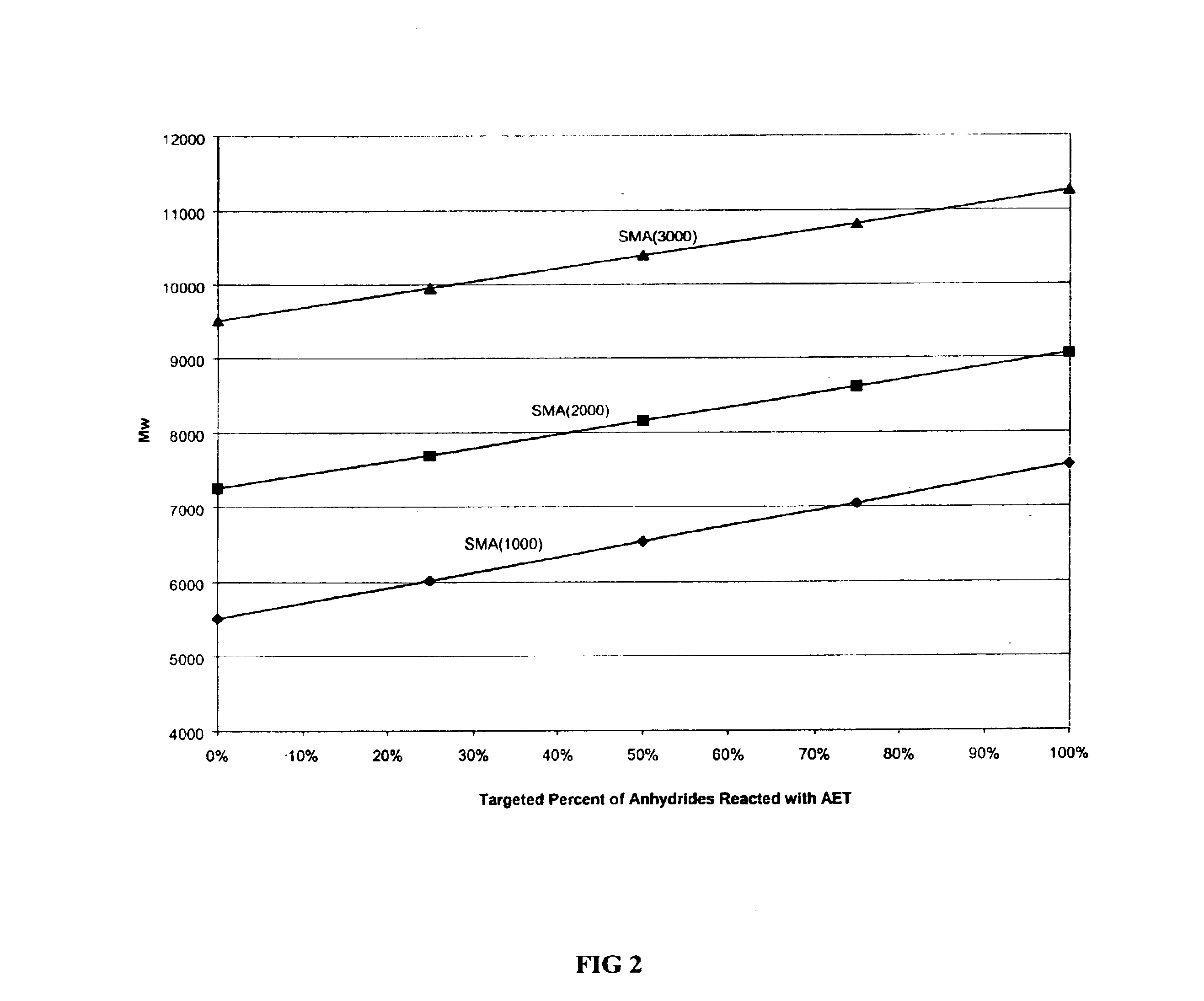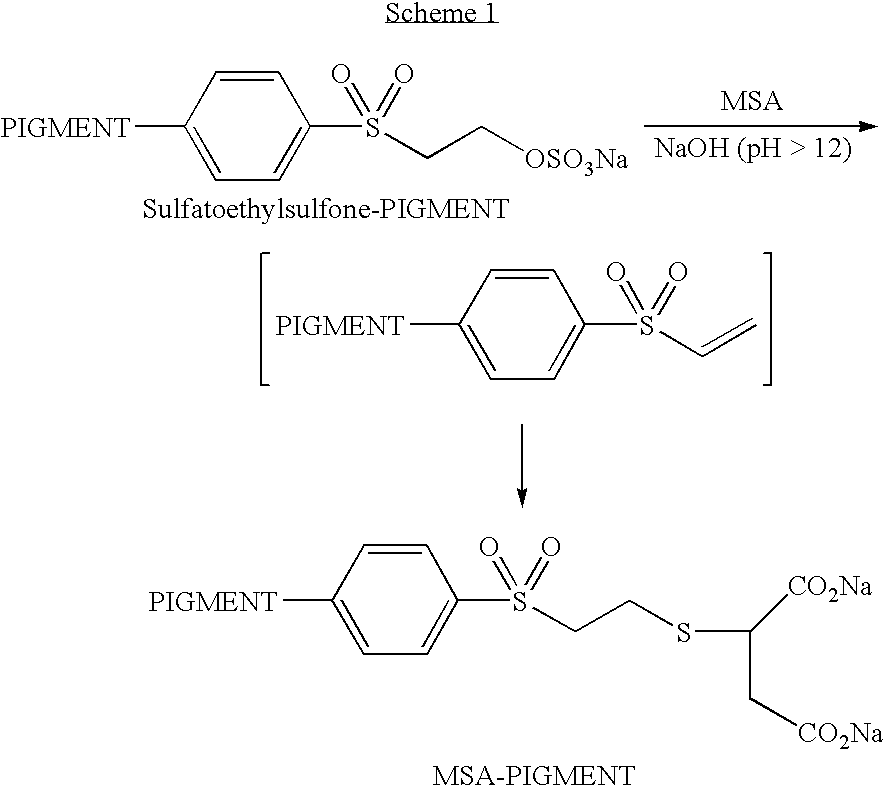Modified pigments and process for preparing modified pigments
a technology of modified pigments and pigments, applied in the field of modified pigments and processes for preparing modified pigments, can solve the problem that methods relying on the inherent functionality of the surface of pigments cannot be applied in general
- Summary
- Abstract
- Description
- Claims
- Application Information
AI Technical Summary
Problems solved by technology
Method used
Image
Examples
examples
[0044]For the following examples, the styrene-co-maleic acid polymers were obtained from the Sartomer Company and are shown in Table 1:
[0045]
TABLE 1Polymer IDMWStyrene:Maleic Anhydride RatioSMA(1000)5,5001:1SMA(2000)7,2502:1SMA(3000)9,5003:1SMA(1440)*7,5001.5:1 *SMA(1440) polymer was prepared by reacting approximately 65% of the anhydrides of the SMA starting polymer with 2-butoxyethylalcohol to afford the corresponding half acid ester.
[0046]Dimethylformamide (DMF), acrylic acid, mercaptosuccinic acid (MEA), aminoethanethiol hydrochloride (AET.HCl), 5,5′-dithiobis(2-nitrobenzoioc acid) (DTNB), ethylchloroformate, concentrated HCl, and triethylamine (TEA) were obtained from Aldrich Chemical Co. and used without further purification. Joncryl® 680 was obtained from S. C. Johnson.
[0047]Particle size was determined using a Microtrac® Particle Size Analyzer, and the values reported are the mean volume particle size (mV). Percent attached polymer was calculated from thermogravimentric an...
examples 1-3
[0048]The following examples describe the preparation of a modified pigment of the present invention according to Scheme 1 below:
example 1
[0049]A 14.9% aqueous dispersion of Black Pearls® 880 carbon black (available from Cabot Corporation, Boston, Mass.) having attached a 2-(sulfatoethylsulfone) group was prepared according to the procedure described in PCT Publication No. WO 01 / 51566 to yield a pigment dispersion. The resulting pigment having attached an electrophilic group was analyzed for sodium content to determine that the amount of attached group was 0.3 mmol / g of dry carbon black.
[0050]A solution of 0.5 g (3.33 mmol) mercaptosuccinic acid in 5 ml of deionized water was mixed with 20 g of the above pigment dispersion in a round bottom flask and the resultant mixture was stirred at room temperature, under an atmosphere of nitrogen. To this was added dropwise 15 ml of 1N NaOH to afford a pH of 12.8 and then the mixture was stirred overnight to give a dispersion of a modified pigment.
[0051]The modified pigment dispersion was purified by diafiltration using a polysulfone hollow fiber membrane with a pore size of 0.0...
PUM
| Property | Measurement | Unit |
|---|---|---|
| Fraction | aaaaa | aaaaa |
| Fraction | aaaaa | aaaaa |
| Fraction | aaaaa | aaaaa |
Abstract
Description
Claims
Application Information
 Login to View More
Login to View More - R&D
- Intellectual Property
- Life Sciences
- Materials
- Tech Scout
- Unparalleled Data Quality
- Higher Quality Content
- 60% Fewer Hallucinations
Browse by: Latest US Patents, China's latest patents, Technical Efficacy Thesaurus, Application Domain, Technology Topic, Popular Technical Reports.
© 2025 PatSnap. All rights reserved.Legal|Privacy policy|Modern Slavery Act Transparency Statement|Sitemap|About US| Contact US: help@patsnap.com



